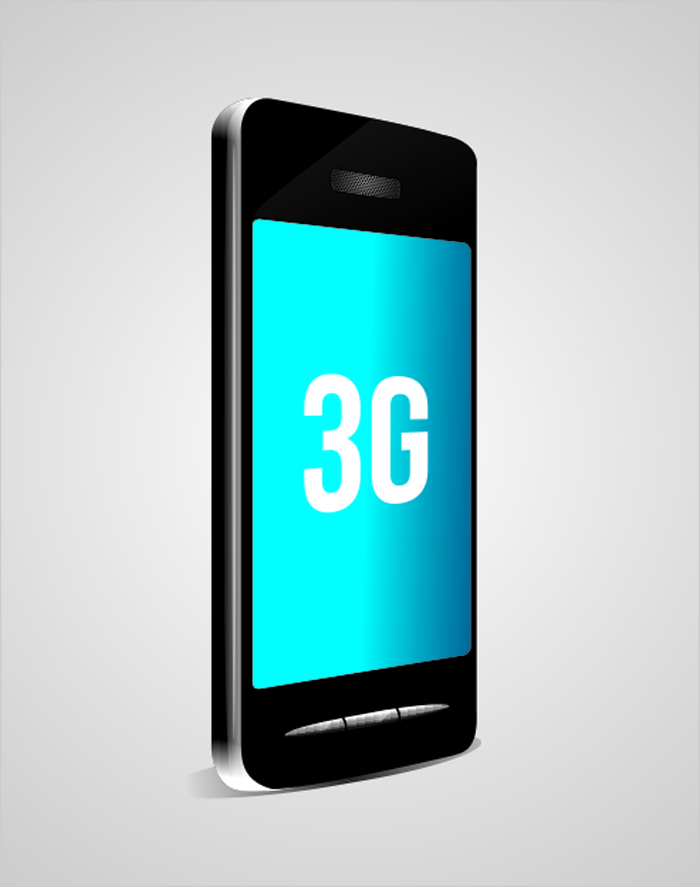
TD-SCDMA – Time-division Synchronous Code-division Multiple Access.
CDMA2000
CDMA2000 Technical summary
Frequency band: Any existing band.
Minimum frequency band required: 1x: 2×1.25MHz, 3x: 2×3.75
Chip rate: 1x: 1.2288, 3x: 3.6864 Mcps
Maximum user data rate: 1x: 144 kbps now, 307 kbps in the future 1xEV-DO: max 384 kbps – 2.4 Mbps, 1xEV-DV: 4.8 Mbps.
Frame length: 5ms, 10ms or 20ms
Power control rate: 800 Hz
Spreading factors: 4 … 256 UL
TD-SCDMA
Time Division Synchronous CDMA (TD-SCDMA) was proposed by China Wireless Telecommunication Standards group (CWTS) and after approval by the ITU in 1999, this technology is being developed by the Chinese Academy of Telecommunications Technology and Siemens. TD-SCDMA uses the Time Division Duplex (TDD) mode, i.e., traffic from the mobile terminal to the base station (uplink) and vice versa (downlink) are transferred in the same frame in different time slots. The uplink and downlink spectrum is assigned flexibly, depending on the type of information to be transmitted. When services like telephony are used a symmetrical split in the uplink and downlink takes place whereas when asymmetrical data like e-mail and internet are transmitted from the base station, more time slots are used for downlink than for uplink.
TD-SCDMA Technical Summary
Frequency band: 2010 MHz – 2025 MHz in China (WLL 1900 MHz – 1920 MHz)
Minimum frequency band required: 1.6MHz
Frequency re-use: 1 (or 3)
Chip rate: 1.28 Mbps
Frame length: 10ms
Number of slots: 7
Modulation: QPSK or 8-PSK
Voice data rate: 8kbit/s
Circuit switched services: 12.2 kbits/s, 64 kbits/s, 144 kbits/s, 384 kbits/s, 2048 kbits/s
Packet data: 9.6kbits/s, 64kbits/s, 144kbits/s, 384kbits/s, 2048kbits/s
Receiver: Joint Detection, (mobile: Rake)
Power control period: 200 Hz
Number of slots / frame: 7
Frame length: 5ms
Multi carrier option
Handovers: Hard Smart antennas, Baton handover, Uplink synchronization
Physical layer spreading factors: 1, 2, 4, 8, 16
WCDMA (UMTS)
Minimum frequency band required: ~ 2x5MHz
Frequency re-use: 1
Carrier Spacing: 4.4MHz – 5.2 MHz
Maximum number of (voice) channels on 2x5MHz: ~196 (spreading factor 256 UL, AMR 7.95kbps) / ~98 (spreading factor 128 UL, AMR 12.2kbps)
Voice coding: AMR codecs (4.75 kHz – 12.2 kHz, GSM EFR=12.2 kHz) and SID (1.8 kHz)
Channel coding: Convolutional coding, Turbo code for high rate data
Duplexer needed (190MHz separation), Asymmetric connection supported
Tx/Rx isolation: MS: 55dB, BS: 80dB
Receiver: Rake
Receiver sensitivity: Node B: -121dBm, Mobile -117dBm at BER of 10-3
Data type: Packet and circuit switch
Modulation: QPSK
Pulse shaping: Root raised cosine, roll-off = 0.22
Chip rate: 3.84 Mcps
Channel raster: 200 kHz
Maximum user data rate (Physical channel): ~ 2.3Mbps (spreading factor 4, parallel codes (3 DL / 6 UL), 1/2 rate coding), but interference limited.
Maximum user data rate (Offered): 384 kbps (year 2002), higher rates ( ~ 2 Mbps) in the near future. HSPDA will offer data speeds up to 8-10 Mbps (and 20 Mbps for MIMO systems)
Channel bit rate: 5.76Mbps
Frame length: 10ms (38400 chips)
Number of slots / frame: 15
Number of chips / slot: 2560 chips
Handovers: Soft, Softer, (interfrequency: Hard)
Power control period: Time slot = 1500 Hz rate
Power control step size: 0.5, 1, 1.5 and 2 dB (Variable)
Power control range: UL 80dB, DL 30dB
Mobile peak power: Power class 1: +33 dBm (+1dB/-3dB) = 2W; class 2 +27 dBm, class 3 +24 dBm, class 4 +21 dBm
Number of unique base station identification codes: 512 / frequency
Physical layer spreading factors: 4 … 256 UL, 4 … 512 DL

Fig. 2:
History
4G
Filed Under: Articles


Questions related to this article?
👉Ask and discuss on Electro-Tech-Online.com and EDAboard.com forums.
Tell Us What You Think!!
You must be logged in to post a comment.